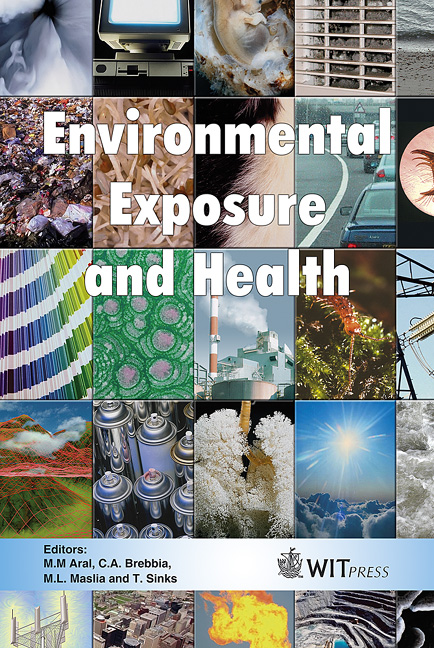Environmental Exposure Of Thallium And Potential Health Risk In An Area Of High Natural Concentrations Of Thallium: Southwest Guizhou, China
Price
Free (open access)
Transaction
Volume
85
Pages
8
Published
2005
Size
287 kb
Paper DOI
10.2495/EEH050381
Copyright
WIT Press
Author(s)
T. Xiao, L. He, J. Guha, J. Lin & J. Chen
Abstract
Little is known in the literature about thallium (Tl) exposure from naturally occurring Tl contamination. This paper draws attention to the potential health risk posed by high concentrations of naturally occurring Tl in the environment. The inhabitants of a rural area of southwest Guizhou Province, China, reside within a natural Tl accumulated environment resulting from the Tl-rich sulfide mineralization, and they face a severe Tl exposure in their daily lives. The daily intake 1.9 mg Tl from the consumed food crops was estimated for a local adult inhabitant of Lanmuchang. High Tl concentrations were detected in urines of the local residents. Measured urinary Tl levels are as high as 2.51-2,668 µg/L, surpassing the accepted world urine Tl level <1 mg/L for \“non-exposed” humans. However, there is a positive relationship between the extent of Tl exposure from Tl in soil and crops in the immediate environment and the levels of Tl detected in urine. This study has been able to identify that the elevated urinary Tl levels are mainly attributable to Tl accumulation in locally grown vegetables acquiring Tl from natural sources in the local soils. This study indicates clearly that natural sources of high concentrations of Tl poses a potential health risk to the population, and that monitoring the urinary Tl level is a reliable and accurate way of bio-marking Tl exposure. Keywords: Thallium, environmental exposure, public health, soil, crop, Guizhou, China.Keywords
Thallium, environmental exposure, public health, soil, crop, Guizhou, China.




